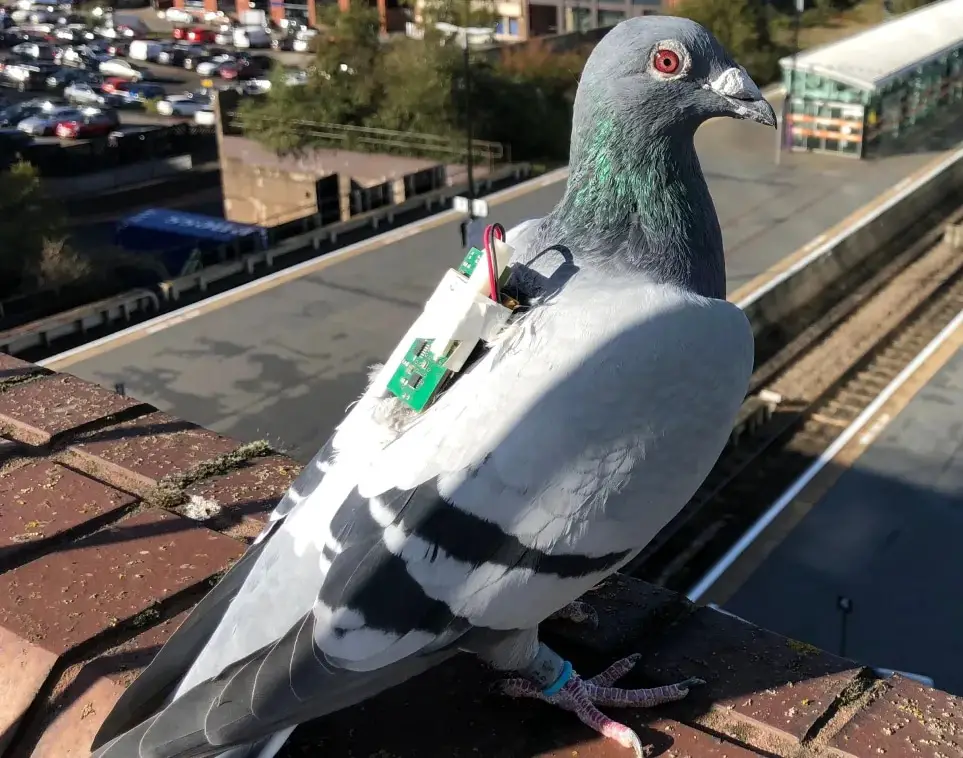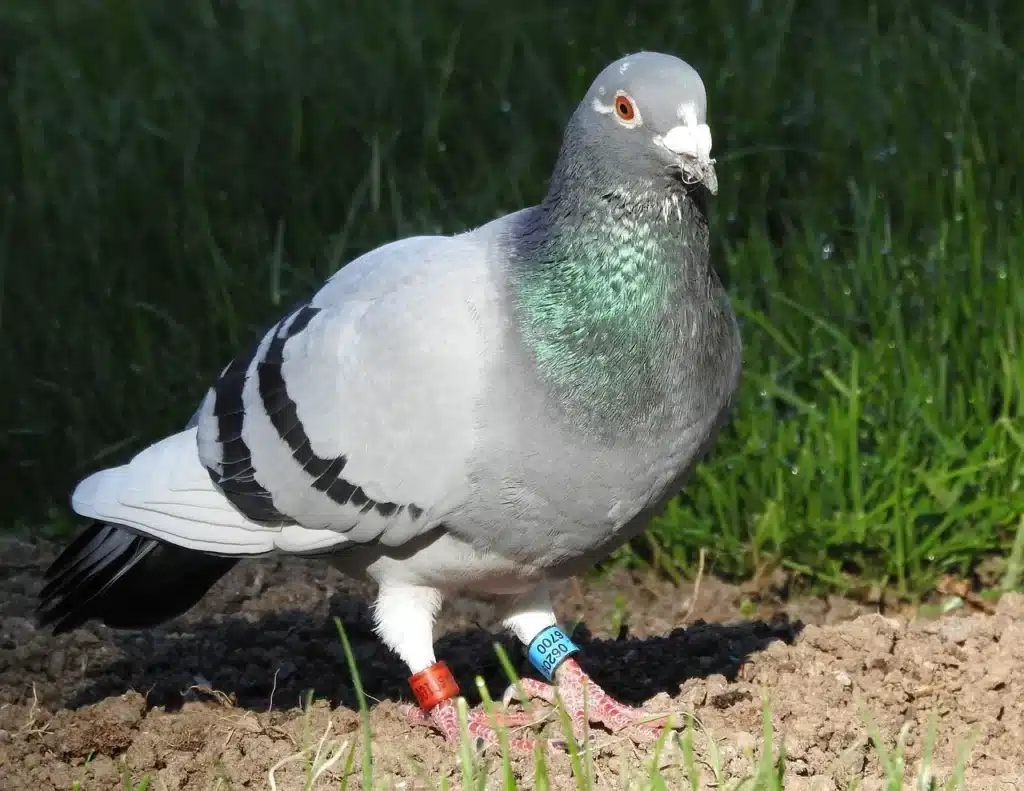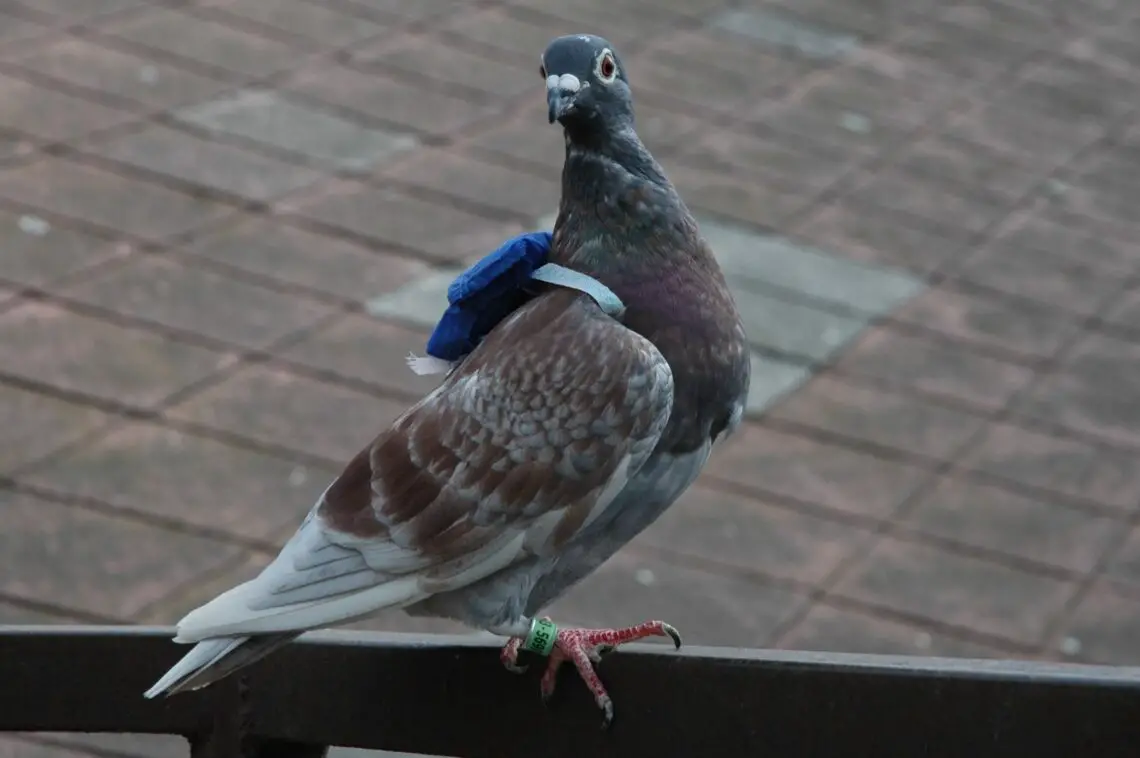Introduction
What Are Carrier Pigeons: Carrier pigeons, also known as homing pigeons, are remarkable avian companions that have played a pivotal role in human communication for centuries. These pigeons belong to the species Columba Livia and possess a unique ability to navigate vast distances and return to their home loft with remarkable precision. Their extraordinary homing instincts and navigational skills have made them invaluable messengers throughout history, serving as a reliable means of transmitting information across great distances, particularly in times.
The fascinating world of carrier pigeons, their historical significance, and the science behind their remarkable ability to find their way home. Carrier pigeons, often characterized by their distinctive appearance with white plumage and a small, sturdy build, have been domesticated and bred for their homing abilities. The partnership between humans and these birds dates back over 3,000 years, with records of their use in ancient civilizations such as the Egyptians and Romans. That carrier pigeon reached the zenith of their popularity as a means of long-distance communication.
These remarkable birds were employed during times of conflict, most notably in both World War I and World War II, where they played a critical role in delivering vital messages across enemy lines when traditional communication methods were compromised. Their success rate in delivering messages was astonishing, often surpassing modern technological alternatives of the time. That carrier pigeon reached the zenith of their popularity as a means of long-distance communication.

What is a carrier pigeon used for?
Thanks to their unique homing ability, carrier pigeons have long played an invaluable role in war as military messengers and, as technology progressed, photographers. During both the First and Second World Wars, carrier pigeons were used to transport messages back to their home coop behind the lines.
Carrier pigeons, also known as homing pigeons, have been historically used primarily as messengers. Their exceptional navigational skills and homing instincts make them well-suited for delivering written messages over long distances. In various cultures and eras, carrier pigeons played a crucial role in facilitating communication, particularly when other means of transmitting messages were impractical or unreliable.
One of the most notable uses of carrier pigeons was during times of conflict, such as World War I and World War II. In these tumultuous periods, they were employed to transmit vital military information between distant outposts and headquarters. Their speed and reliability made them an invaluable asset on the battlefield, and their success rate in delivering messages was remarkable.
Outside of the military, carrier pigeons were also used in civilian contexts. They were employed in the business world to relay important documents between remote offices, and they found application in remote areas where traditional mail services were limited or nonexistent.
What is the difference between a pigeon and a carrier pigeon?
The carrier pigeon is a domesticated rock pigeon Columba livia which is used to carry messages, while the passenger pigeon Ectopistes migration was a North American wild pigeon species that went extinct by 1914.
Difference between a pigeon and a carrier pigeon lies in their purpose and training. Pigeons, scientifically known as Columba livia domestica, encompass a wide variety of pigeon breeds, many of which are kept as pets, used for racing, or even raised for meat. They come in various colors and sizes and are found in urban and rural areas worldwide.
Carrier pigeons, on the other hand, are a specific subset of pigeons that have been selectively bred for their remarkable homing instincts and navigational abilities. These pigeons have undergone extensive training to become skilled messengers. They possess an innate ability to find their way back to their home loft from great distances with impressive accuracy, making them suitable for delivering written messages.
While carrier pigeons are a domesticated form of pigeons, their primary function sets them apart. Regular pigeons, often seen in cities and parks, are not trained for messenger tasks and lack the specialized skills that carrier pigeons possess. They serve various roles in urban ecosystems but do not exhibit the navigational and homing capabilities that have made carrier pigeons historically valuable for long-distance communication.
What were carrier pigeons called?
Because of this skill, domesticated pigeons were used to carry messages as messenger pigeons. They are usually referred to as pigeon post if used in post service, or war pigeon during wars.
Messenger Pigeon: This name emphasizes their role as messengers, especially during times of conflict when they were employed to carry critical military messages.
War Pigeon: During wartime, carrier pigeons were often associated with military operations, and this name reflects their significance in delivering crucial information on the battlefield.
Racing Homer: In some cases, carrier pigeons were also referred to as racing homers when they were used in pigeon racing, a sport where pigeons compete to return home from a distant location as quickly as possible.
Flying Courier: This term underscores their unique ability to function as airborne couriers, reliably transporting messages when other means of communication were limited or compromised.
Are carrier pigeons normal pigeons?
The Carrier or English Carrier is a breed of fancy pigeon developed over many years of selective breeding. Carriers, along with other varieties of domesticated pigeons, are all descendants of the rock dove Columba livia.
Purpose: The primary distinction is their purpose. Carrier pigeons are bred and trained for their remarkable homing abilities, enabling them to navigate over long distances and return home accurately. They are specifically used as messengers, whereas “normal” pigeons have a variety of roles, including pets, racing, and, in some cases, as a source of meat.
Navigational Skills: Carrier pigeons possess unique navigational and homing instincts that set them apart. They can find their way back to a specific location, known as their home loft, from great distances, making them invaluable for long-distance communication. This extraordinary skill is not typically found in normal pigeons.
Behavior: Carrier pigeons are often more disciplined and focused in their behavior due to their training. They are conditioned to carry messages reliably, whereas normal pigeons may exhibit a broader range of behaviors in various urban and rural environments.
Do carrier pigeons get lost?
Homing pigeons are remarkable navigators. Although they are able to find their loft from almost any location, they do get lost occasionally.
Extreme Weather: Harsh weather conditions, such as heavy storms, strong winds, or dense fog, can disorient pigeons and hinder their ability to navigate accurately.
Predators: Encounters with birds of prey or other predators during their journey can cause carrier pigeons to become disoriented or even fall victim to these threats.
Physical Fatigue: Pigeons can become physically exhausted during long flights, affecting their ability to maintain their course and increasing the chances of becoming temporarily lost.
Environmental Changes: Changes in the landscape or the removal of familiar landmarks can confuse pigeons during their flight.
What are the disadvantages of carrier pigeons?
However, this form of communication was not without its own drawbacks. Pigeons could not be used after dark and they were also susceptible to gas. Casualties were fairly high, with around 10 percent of the birds employed during the Battle of Messines 1917 falling foul of the enemy.
Limited Message Capacity: Carrier pigeons can only carry small, written messages, which restricts the amount of information that can be transmitted compared to modern electronic communication methods.
Message Speed: Although carrier pigeons are fast flyers, their speed is limited by their physical capabilities. They cannot compete with the instantaneous delivery of information afforded by digital communication technologies.
Weather Dependence: Carrier pigeons are susceptible to adverse weather conditions, such as heavy rain, strong winds, or fog, which can disrupt their flights and cause delays or message losses.
Predator Vulnerability: Birds of prey and other predators pose a threat to carrier pigeons during their flights, which can result in message interception or loss.
One-Way Communication: Carrier pigeons can only carry messages in one direction, from a designated loft back to their home location. They are not suitable for two-way communication, limiting their utility in dynamic conversations.
Training and Maintenance: Training carrier pigeons and maintaining a loft for them requires time, effort, and resources, which may not be practical for many modern communication needs.
Who used carrier pigeons?
With training, pigeons can carry up to 75g (2.5 oz) on their backs, and they have been used for communication for a very long time, especially in China. In ancient Egypt, people used pigeons to send messages home from ships at sea. Carrier pigeons are also mentioned several times in ancient Greek and Roman literature.
Military Forces: Various military forces employed carrier pigeons extensively during times of conflict. These pigeons were used to send crucial messages between military units on the front lines and their headquarters. They played a vital role in both World War I and World War II, where their reliability in delivering sensitive information was unmatched.
Businesses: In the late 19th and early 20th centuries, businesses often used carrier pigeons to transmit important documents and messages between remote offices or locations. This provided a relatively quick and secure means of communication, especially in areas lacking reliable postal services.
News Agencies: Before the widespread use of telegraphs and telephones, news agencies employed carrier pigeons to transmit breaking news from remote or inaccessible locations to their headquarters, enabling faster dissemination of information.
Rescue Organizations: Search and rescue teams have used carrier pigeons to relay critical information about the location of missing persons or disaster survivors when conventional communication methods were unavailable.
Civilian Hobbyists: Pigeon racing enthusiasts bred and trained carrier pigeons for competitive racing events, with pigeons racing home from distant release points.
Can a pigeon bite you?
You will not scare a pigeon to death or give her a heart attack. And pigeons are harmless to us. They can’t really bite any teeth and their beak is soft and weak and, contrary to popular belief, you are highly unlikely to ever be made sick by a pigeon.
Pigeons, by nature, are not aggressive birds, and their primary defense mechanism is to fly away from perceived threats rather than engage in physical confrontation. As a result, pigeon bites are relatively rare and typically occur only when the bird feels cornered, threatened, or provoked.
Pigeon beaks are not particularly sharp or strong compared to some other bird species, but they do have a pointed tip that can potentially cause a minor, superficial bite if the bird feels compelled to defend itself. These bites are usually more startling than harmful and may result in small scratches or puncture wounds.
That pigeons are known carriers of various diseases, and their droppings can contain harmful pathogens. Therefore, even a minor pigeon bite should be cleaned and treated promptly to reduce the risk of infection.

Conclusion
Carrier pigeons, or homing pigeons, stand as remarkable avian allies in the human story of communication. With their innate ability to navigate vast distances and return home with uncanny precision, these birds have etched their presence in history as indispensable messengers. From ancient civilizations to the battlefields of the 20th century, carrier pigeons have bridged gaps in communication when conventional means faltered. Their unique skills, a blend of visual, magnetic, and olfactory cues, have intrigued scientists and enthusiasts alike, leaving many questions about their navigation still unanswered.
Yet, the enduring partnership between humans and carrier pigeons serves as a testament to our innovative spirit, resourcefulness, and the unbreakable bond that can exist between our species and the natural world. As we look back on the legacy of carrier pigeons, we are reminded of their vital role in connecting people across vast distances and through challenging circumstances. They remain a symbol of resilience, reliability, and the extraordinary ways in which nature’s wonders have enriched our lives throughout history. The carrier pigeon’s story also underscores the importance of adaptability in communication.
Throughout history, humans have harnessed the potential of these birds when other methods of information exchange were unreliable or unavailable. This adaptability serves as a valuable lesson in the face of modern technological advancements. While carrier pigeons may no longer be a practical means of communication in today’s digital age, their legacy reminds us to explore creative and resilient solutions to communication challenges, especially in times of crisis or when conventional systems fail. Carrier pigeons offer a fascinating glimpse into the intricate relationship between humans and the animal kingdom.





No Comments